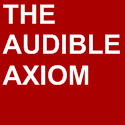On the left, Donald Ayler, the brother of Albert Ayler, on the right.
Listen to Albert Ayler's "Ghosts - Second Variation" from his 1964 album, Spiritual Unity:
In 1965, Charles Mingus and drummer Roy Brooks assembled a new avant-garde free jazz ensemble to make its debut at the Village Vanguard in New York
Only Mingus got it all wrong. If anything, he created the most perfect free jazz ensemble that could be assembled. Free jazz is about spontaneous emotion – emotion via sound. Disregarding general conventions about meter and pitch, free jazz is supposed to illustrate a player’s conscious and/or subconscious through something like wordless expression. I’ve done an acting exercise, to heighten actors’ senses to emotion, to become less self-conscious on stage, in which a scene is improvised without speech – just moans and mutterings and screams, primal expression, if you will. What better way to show a child’s personality than listen to what the child does on an instrument for the first time? Fiddling around with it, testing its limitations and its effects, its timbre, etc. This “technique” is not be foolproof, of course, it’s not guaranteed to illustrate a child’s entire personality and a typed lists of their hidden desires on the side, but it certainly has the potential to say something about a person - and to say that because it’s children and not adults playing, then it’s immediately not at the same quality as free jazz made by adults, is insane.
One of the criticisms of free jazz by Mingus was that the musicians didn’t know what they were playing – they just randomly moved their fingers around, blew hard into the mouthpiece, and hoped something cool and hip would come out. This is a perfectly valid criticism, which is why there are better free jazz musicians than others, and why the “children” performance works so well. Anyone who tries to express themselves, forcing their emotion out into an instrument, is immediately in another realm than fiddling that might “unconsciously” reveal emotion or personality. The great free jazz players are not just marked by the innovations they made, but how they successfully transferred their emotional energy into an actual coherent structure of a sound, something that could be understood immediately, leaving little room for varying interpretations. Take an 80 year old man who’s never played an instrument in his life and ask him to try to express himself on a tuba with no regard to melody or structure could easily outplay someone who was amazingly technically proficient at a tuba but didn’t know how to transfer their message and emotion into the sound coming out of the tuba. Technical proficiency and virtuosity simply can – but not always – heighten expression, which is why even I’ll admit I’ll defenitely take Ayler over a child. That's mainly because Ayler is one of the most revolutionary, creative, and expressive jazz musicians of all time - if not the most expressive. Simply put, free jazz harder than you think. Though I encourage you to try.















0 comments:
Post a Comment